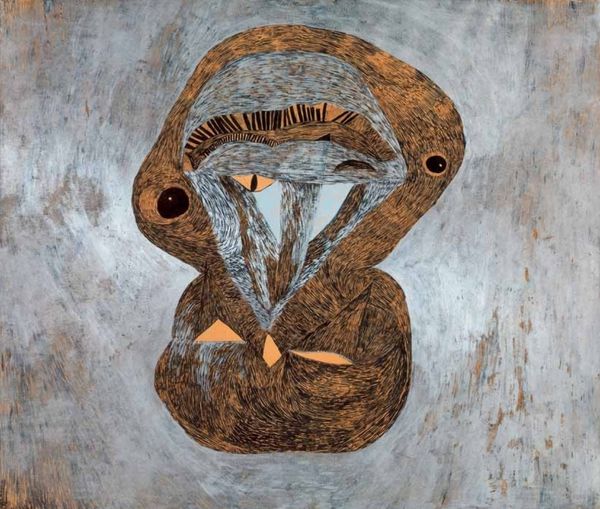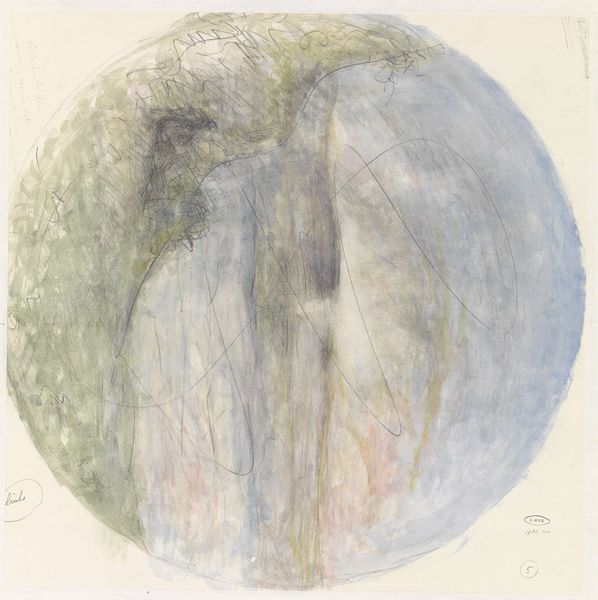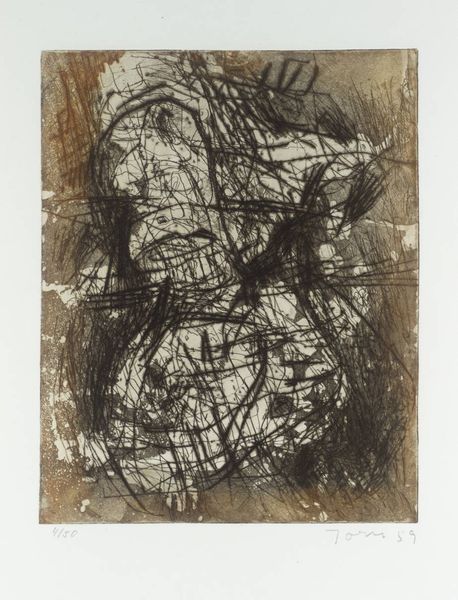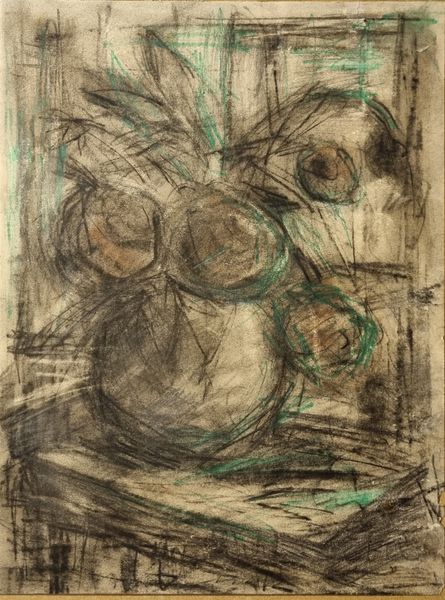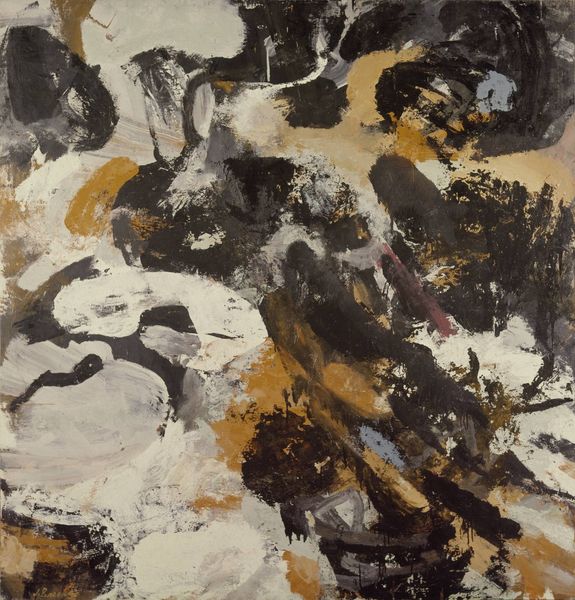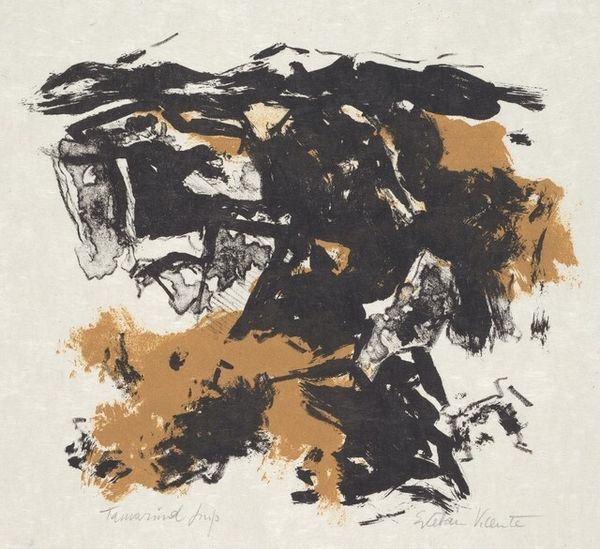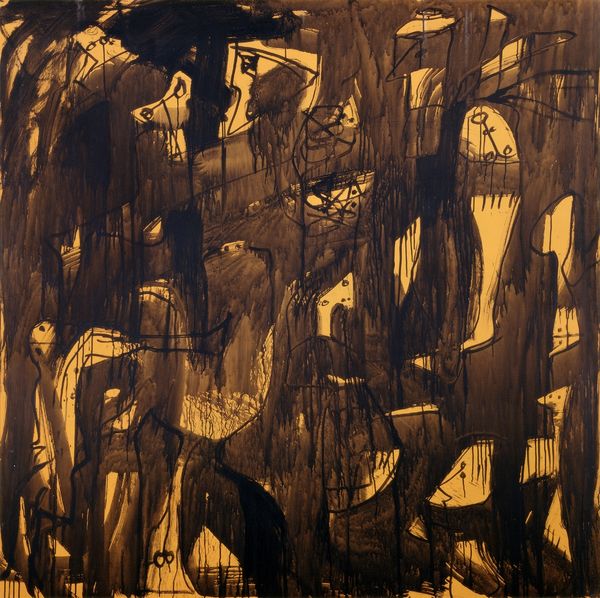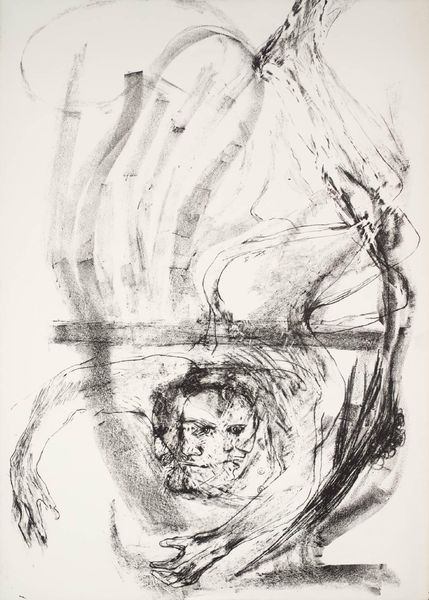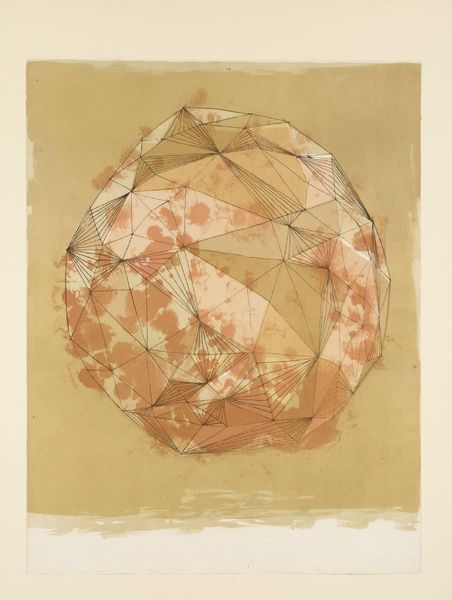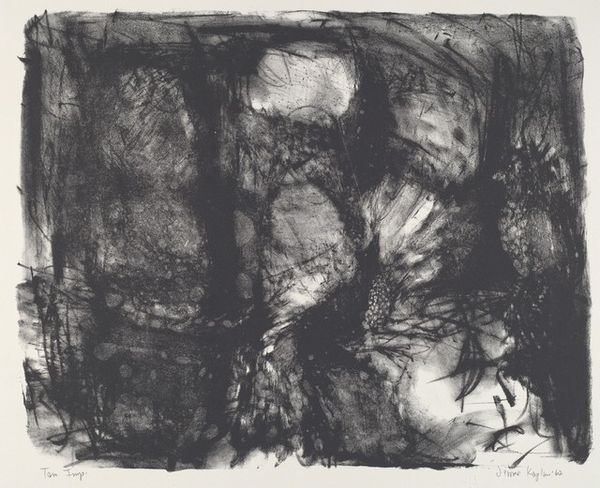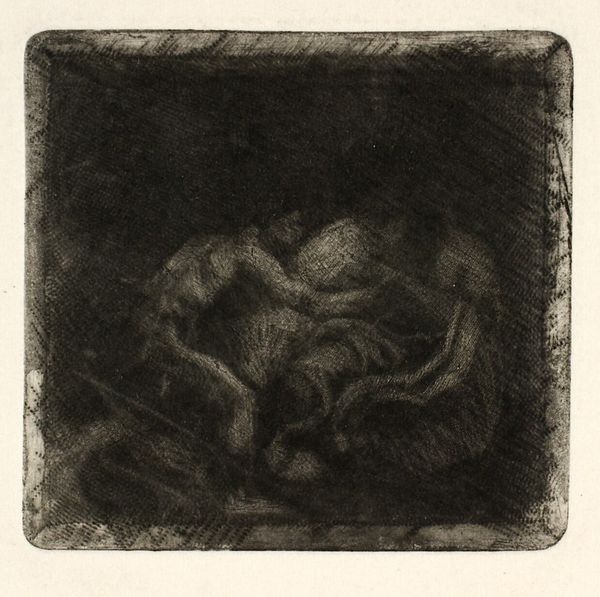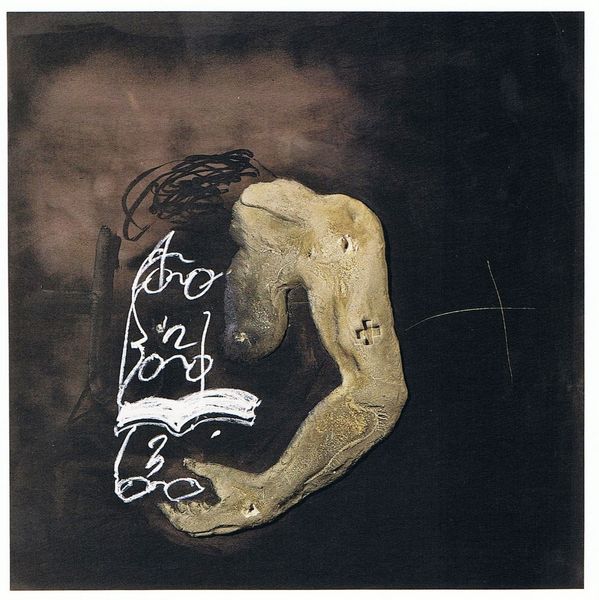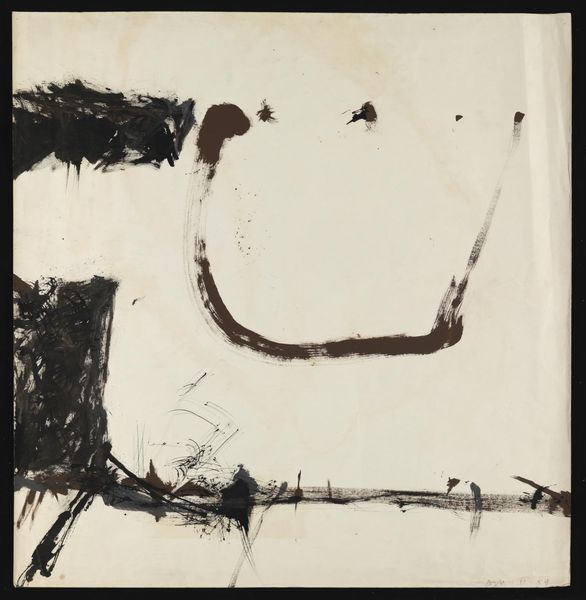
Copyright: CC-BY-NC-ND 4.0 DEED, Photo: Tate
Editor: Here we have Alfred Stevens' "Design for Roundel of a Door at Dorchester House," currently residing at the Tate. It feels quite classical in its depiction of the human form, but with a certain fluidity in the watercolor. What compositional elements stand out to you? Curator: The carefully considered placement of the figure within the roundel immediately strikes me. Note how the curves of the body echo the shape of the frame, creating a harmonious relationship between form and boundary. Consider the interplay of light and shadow, structuring depth and volume. What do you observe about the artist's use of line? Editor: The lines seem almost gestural, defining form economically. I see that the artist is less interested in a detailed likeness, instead focused on the interplay of shapes and values. Curator: Precisely. Stevens is less concerned with mimesis than with the inherent visual language of the medium. The washes of color, the dynamic lines – these elements coalesce to create a self-referential aesthetic experience. Editor: It’s interesting to consider how the medium itself becomes the message. I hadn't considered the self-referential aspect of the work. Curator: The formal elements prompt us to look closer at the very language of art.
